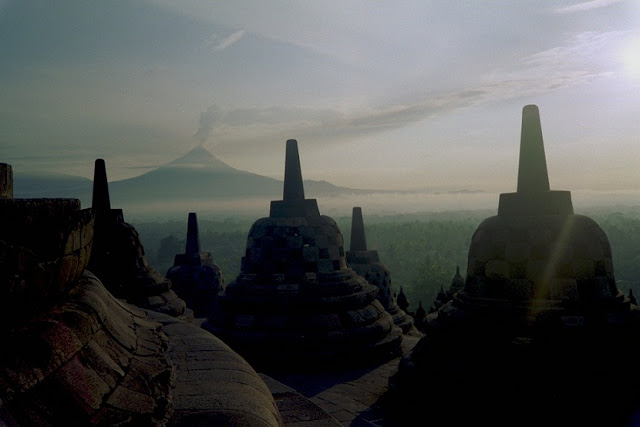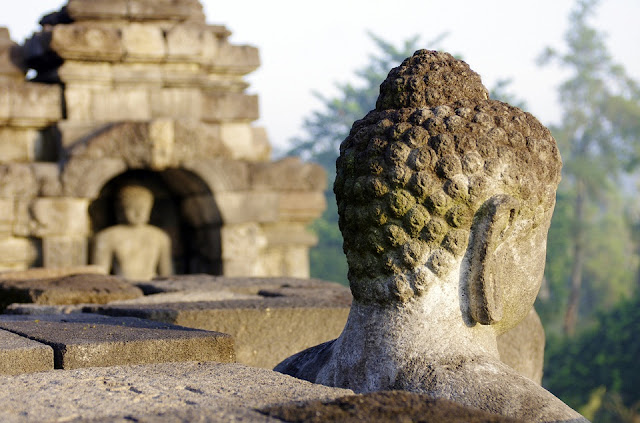Some of us must have heard about Borobudur Temple while the others may have
already visited it. This grand and majestic holy site of Buddhism is located in
Central Java, Indonesia, and was built by Sailendra dynasty between 778 to 842
AD—four hundred years before most cathedrals in Europe were begun to construct.
The size of the cultural legacy itself is so huge that it has been labelled the world largest Buddhist temple and listed as a UNESCO World
Heritage Site.
Besides the fact that Borobudur is the largest Buddhist temple ever recorded
in human history, there are several interesting historical facts about it. Firstly,
the temple had been abandoned by the dynasty who built it possibly due to the mysterious
migration of the kingdom to East Java in the 1500's. Secondly, the world's largest Buddhist temple had been
buried for centuries under several layers of volcanic ash before it was rediscovered when
Java was under British control in 1814. There is a hypothesis that a famine
resulting from a volcanic eruption during the years had prompted the
depopulation of the region and the abandonment of the site. Another explanation
is that the rise of Islam had hastened the downfall of Buddhism in Java and the
neglect of the temple. Yet, it is unknown when the active
use of the site and Buddhist pilgrimage to
it started to cease.
 |
| Borobudur with erupting Merapi Volcano on the background in 2010 |
However, when Sir Thomas Stanford Raffles of the British
administration revealed the holy temple
in 1815 after being
advised of its location by native Indonesians, volcanic ash and the lush of Java
vegetation was covering the site, making it almost completely hidden. Upon seeing
the site condition, an archaeologist, H.C. Cornelius then received order from
the governor to excavate and clear the site from the vegetation and to do
thorough investigation. More than 200 men were occupied to cut down and burn trees
and bushes, and to dig away at the earth for 45 days.
Several restoration projects has since been conducted but the largest restoration
was undertaken in 1975 until 1982
by the Indonesian government with the help of UNESCO. More than one million pieces of stones were disassembled
and removed from the site to be individually
identified, catalogued, cleaned and treated for preservation during the massive restoration. The restoration project on Borobudur temple
had become a testing ground for various
new conservation techniques, including brand new procedures to battle the
microorganisms attacking stones.
 |
| A painting by G.B. Hooijer (c. 1916-1919) reconstructing the scene of Borobudur during its heyday (Wikipedia) |
However, microorganisms and climate are not the only
threats for the cultural legacy site. Back in 1985 (read about Borobudur bombing here), the relic was targeted by right-wing extremists who had detonated bombs at the site, damaging
nine stupas. And
in 2014 (read about ISIS threats here), another threat was released by the Indonesian branch of ISIS terrorists (infamous
for their criminal acts on humanity now targeted by the police and security
forces), resulting in the tightening of security by the police within and
around the complex at day and night.
No
matter what happened, the magnificent Borobudur temple
is
still used for pilgrimage until today. Once
a year, tens of thousands of Buddhists
in Indonesia, along
with hundreds others arriving from various countries all over the world, flood
into the site to celebrate Vesak Day at
the holy ground. And Borobudur is still Indonesia’a single
most visited tourist attraction.
***
Via travel.nationalgeographic, whc.unesco
Photo: Freeimages.com/Daniel Bouwmeester
Bagikan
Borobudur, The World’s Largest Buddhist Temple Buried for Centuries
4/
5
Oleh
Unknown





